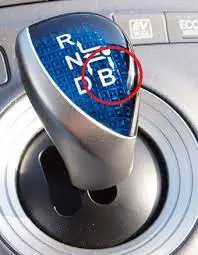The Toyota Prius is an electric motor with an internal combustion engine and a hybrid drivetrain. Its Prius Gear is an excellent feature, with a gearshift that comprises ‘neutral'(N), ‘drive'(D), ‘reverse'(R), and ‘braking'(B).
This article will focus on understanding the “B” in the Prius Gear and its functions.
What is B in Prius Gear?
The letter ‘B’ in the Prius Gear represents Braking, which is one of the functions of the Toyota Prius’s gearshift. Therefore, the letter “B” means engine braking at the Prius Gear, which is similar to a traditional transmission.

When this selection is used, it creates a lower gear and increases the engine drag to slow your car down; the ‘B” selection in a Prius makes what is called engine braking; this feature is like the behavior of the standard transmission that falsifies a downshift to slow down the Prius if it goes down a hill. In addition, Prius has ‘regenerative braking’ that ensures wasted energy is returned from Braking to a hybrid drivetrain; you will understand more as we get into this article.
When Should I Use B Gear in Prius?
When descending a road, you should use the ‘B’ Gear in a Prius. If you’re on a steep downhill, you will want to use this engine feature to aid your regenerative Braking from being overburdened and worn out.
When you are constantly using the brake pedal in situations where you are to descend a road that rides over a steep hill, this action can drain your brakes out and make it extremely hot. However, the ‘B’ feature at this point, when applied, would reduce the chances of your brakes wearing out and make it less stressed.
In chilly conditions, like winter, the B mode feature also works and aids the brake during this time. Using the ‘B’ mode slows down your vehicle to a gradual form and does not stop suddenly but to escape, causing damage or losing control.
What is Special About a Prius?
In 1997, the Prius was the world’s first large-produced gasoline-electric hybrid car. It is sold in the United States as one of the most fuel-efficient gasoline cars, which tells a lot about the Prius and its sophistication.
The remarkable thing about the Prius is its ability to have an electric motor that aids the petrol motor. Speaking of the batteries of the Prius, there’s something special about them, as the batteries get charged from the petrol motor and the regenerative Braking through the vehicle’s kinetic energy. The batteries used to power the electric motor can be found under the back seat.
Do you know that the battery pack for the second-generation Prius powers 40-60% to a maximum capacity that prolongs the battery’s life? However, petrol motors are not the most efficient when the car accelerates. Therefore, the Prius function assists when accelerating. The electric engine would replace the petrol motor, and this time, the petrol motor would shut off to enable the electric motor to activate. However, because the Prius electric is of maximum help, when the vehicle is accelerating, the discharges of air pollutants from the car, like SO2, Ozone, CO, etc., are lessened by up to 85 percent.
How Do You Use the B on the Prius?
The ‘B’ mode is for steep downhill situations or a mountain road, and it safeguards your car’s brake pad and the whole regenerative braking system.
As you drive, you can never forget and take note of reducing your speed by using your brake pad to ascertain that the rate is within its limit to ensure you are most comfortable driving down the hill. Then, when you are at a low speed, you take your foot off the brake and make a change on the shifter knob to ‘B.” There would be a ‘revving’ sound the engine would produce, not to worry about this, but it is only the engine spinning in a fast way to give you a safe speed without using your regular brake.
Can You Drive in B Mode all the Time?
You can always drive in B mode if that is your driving style. For example, if you need to use the brakes, you should drive in B mode. However, if you drive and the roads are not crowded by traffic, gradual deceleration works better, and you should not drive in B mode.
During regular driving, you should best apply using standard brakes; there is at least no benefit in switching to the ‘B’ mode because changing to this mode when it’s not needed would waste energy needlessly and not recharge the hybrid battery. However, you use a plug-in Prius that provides the option for an electric vehicle (EV) drive mode. This drive mode generates power from the hybrid battery and not the gasoline.
However, it would help if you used the ‘B’ mode on mountain roads or steep downhills. Sticking with the regular brake and not the ‘B’ mode for anything else from mountain roads or steep grades is best.
What Does B on the Gear Shift Mean?
The B on the gearshift means engine Braking’.
The ‘B’ on the gearshift aids for changing to a lower gear for long descents to free up the brake pedal from overloading
Can I Shift From D to B While Driving?
Yes, you can shift from D to B while driving. Moving from D to B is no problem; you can also change from B to D or P.
I’ll give you a few tips, too. Kindly note that the Prius has been programmed to aid. If you are changing gear from a particular position to a different position that will be dangerous to the car and the driver, the Prius will not switch to that change; instead, it will go neutral.
For example, if you are driving and you switch from D (drive) to R (reverse) while in motion, your car will not take the command but will instead change to N (neutral). This happens because that action could potentially damage your vehicle’s transmission and harm you, the driver.
Why is the Toyota Prius the Best Car in the World?
Toyota Prius is not necessarily the best car globally but has advantages. People have different needs for other vehicles; no car would be best at everything.
What a Toyota Prius is and what you need to know about it:
- Fuel efficient: Toyota Prius is fuel-efficient and clearly shows it as it gives an excellent fuel economy.
- Reliability: The Toyota Prius’s ‘hybrid drive’ can be more reliable than the regular drive. The power split device in the hybrid seems much more reliable than a standard transmission in a non-hybrid car. In addition, the hybrid drive is much friendlier to the engine than the regular drive.
- The Prius uses an Atkinson Cycle combustion engine conjoint with an engine motor.
- The Toyota Prius can be found in 75 countries in the world.
- On average, you can spend about $450 a year maintaining your Prius; this saves a lot compared to other cars. Priuses are great cars.
- The Toyota Prius can give a00,000 to 250,000 miles.
- The Toyota Prius can cost about $950 annually for fuel.
- The Prius has a comfortable seating space.
- The Prius is great for long trips.
- It can be very affordable to own.
These are a few reasons why a Toyota Prius could be considered the best car.
Does Prius have Transmission Problems?
Yes, the Prius does have transmission problems. A Toyota Prius Transmission problem can be a shifting delay, wobbliness, jacking or jumping in acceleration mode, an acrid smell from under the hood, or sounding noises.
What could lead to transmission problems, and how can they be avoided?
- Pressing your brake pad using your foot lightly for an extended time could cause transmission problems in the long run. To avoid this, use your brake pedal not so often and use your engine brake when needed so as not to cause transmission problems to your Prius.
- In maintaining the transmission’s health, your Toyota Prius Transmission getting the right amount of fluid at the appropriate time is one of the better ways to keep and prolong the health of your transmission. According to the Manufacturer’s recommendation, maintenance is to have your transmission fluid changed every 30,000 to 60,000 miles. However, when you have a low transmission fluid or leaks, do not worry. These are easy to detect and can be financed at an affordable amount.
- When trying to tow another vehicle or a trailer, even if it appears the intended towed vehicle looks minor, do not tow yet. Instead, check with your owner’s manual before pulling the added weight if too much can cause problems with your transmission because your vehicle couldn’t handle the weight. Ensure you can haul something before doing it, and always use your owner’s manual as a guide.
- When your engine makes an annoying noise, it’s a transmission problem in your Prius; the noise increases as you speed. A failed transaxle could cause this, but this transaxle lasts longer and takes longer to wear out before 100,000 miles.
